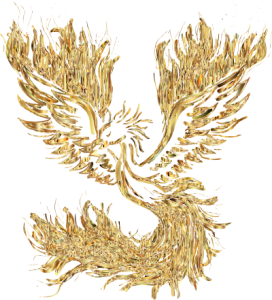Dance is among the most ephemeral of the arts. Brilliant moments by great artists happen spontaneously and one must be present at the performance in order to experience the magical morphing of movement, sound and time. Contemporary video technology has made it possible for us to witness some of ballet’s mystical moments through filmed performances by the likes of Rudolf Nureyev, Mikhail Baryshnikov, Natalia Makarova and Dame Margot Fonteyn. Unfortunately, the technological limitations of the early 20th Century made the legendary performances of the artist who revolutionized the role of the male dancer largely unobservable.
Vaslav Nijinsky (1889 – 1950) was part of the rare convergence of artistic genius that erupted in Europe prior to World War I. Picasso, Debussy, Ravel, Stravinsky, Monet, Renoir, Klimt, Bakst, and Matisse were a part of this artistic stellium. The Ballet Russes was Russia’s contribution to this rarified moment in art. It was the brainchild of Russian impresario Serge Diaghilev, an art aficionado with sufficient access to financial resources through his contacts to make his dream of an independent performing arts company focused on the Russian arts a reality. He managed to bring well known singers such as the bass Fyodor Chaliapin, the choreographer Mikhail Fokine, and dancers like prima ballerina Anna Pavlova into his company (Christiansen, 2022). One of his most promising recruits was the young dancer Nijinsky, who was newly graduated from the Imperial School of Ballet in St. Petersburg and contracted to the Imperial Ballet Company.
Nijinsky lived only to dance. According to accounts of those who worked with him he had many qualities of the savant (Christiansen, 2022; Moore, 2014). He reportedly had extra metatarsals which enabled him to levitate effortlessly from the floor, and musculature so well developed that he could appear to hang suspended in mid air. He had outstanding musicality and a choreographic vision that made the music of Debussy and Stravinsky visible as movement. The combination of his innovative expression as a choreographer, his uncanny talent as a dancer and Diaghilev’s preferential support allowed Nijinsky to create roles and ballets that astounded, shocked and thrilled his audiences.
Nijinsky blended spectacular dancing with a rare acting ability to become and express the roles he was portraying. In Le Spectre de la Rose he became the spirit of the rose being contemplated by an ingénue and exited with a sustained, levitated leap. In L’apres-midi du Faun (set to music by Claude Debussy) Nijinsky simultaneously scandalized and enraptured his audience by wearing a revealing spotted body suit and cluster of strategically placed grapes. Faun’s choreography deviated from classical ballet by mimicking the images and implied movement depicted on an ancient Greek vase, and culminated with the faun unambiguously expressing his sexual ecstasy lying on a rock.
He broke hearts as the poor puppet Petrouchka and thrilled as the Golden Slave in Scheherazade. Audiences had never experienced anything like it, and – in conjunction with the innovative costumes and artistry of set designer Leon Bakst, and Stravinsky’s unprecedented music – Nijinsky became the main attraction of the highly successful Ballet Russes (Christiansen, 2022; Moore, 2014).
On May 29, 1913 the notorious Paris premier of Stravinsky’s Le Sacre du Printemps resulted in a show-stopping riot. Stravinsky later blamed the debacle on Nijinsky’s choreography which had an odd spasticity intended to express primitivism, but which was perceived by the audience only as costumed people walking around pigeon toed and jerking out of time to the music (White, 1979). Le Sacre went out of the rotation and Nijinsky was replaced as company choreographer by Diaghilev’s new interest, Leonid Massine. Diaghilev temporarily exiled Nijinsky to the United States to oversee a contingent of Ballet Russes performers in several productions – a role in which Nijinsky was doomed to fail. Nijinsky was an artist with no administrative skills. He was intensely introverted with few verbal abilities. He rarely spoke. (He taught dancers their parts by physical demonstration rather than spoken instructions.) He was miserable, and the American tour was disappointing.
The coup de grace was Nijinsky’s marriage to Romola de Pulszky, a Hungarian debutante who danced in the company’s corps de ballets. She ingratiated herself with the distraught, frustrated and naive Nijinsky. Diaghilev considered the marriage to be a monumental betrayal, and promptly fired Nijinsky from the company. Under Romola’s questionable management Nijinsky obtained some freelance work as a dancer, but his career was finished. Removed from the art that sustained him, he became increasingly remote, isolated, and eventually dissociated from nearly everything around him. He became a gentle shell, his creativity snuffed. He was diagnosed with schizophrenia, institutionalized and died in a mental institution in 1950 (Moore, 2014; Ostwald, 1991). His tragedy is similar to that of the puppet Petrouchka in that when he was denied his love, the light of his being simply went out.
Some very rough film clips of Nijinsky dancing exist and are available on YouTube. These were taken during performances from 1908 – 1913 with very primitive video equipment. They are grainy and of extremely poor quality, but if you watch closely you can spot a few seconds of the brilliance that Vaslav Nijinsky embodied for a brief time.

